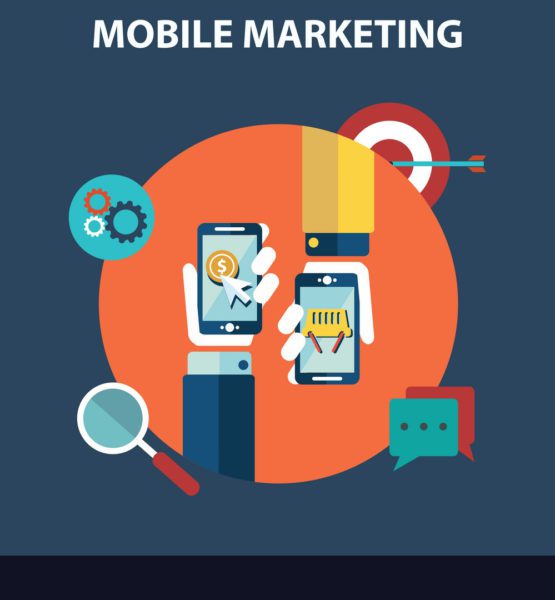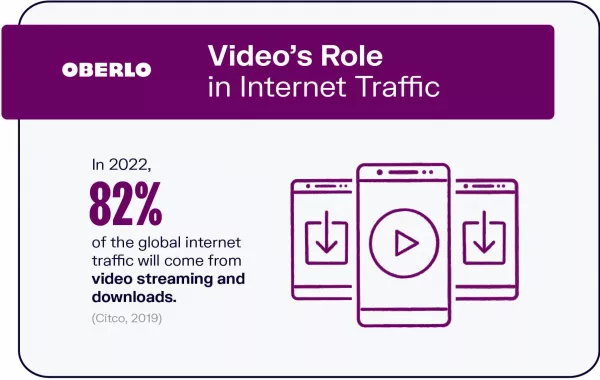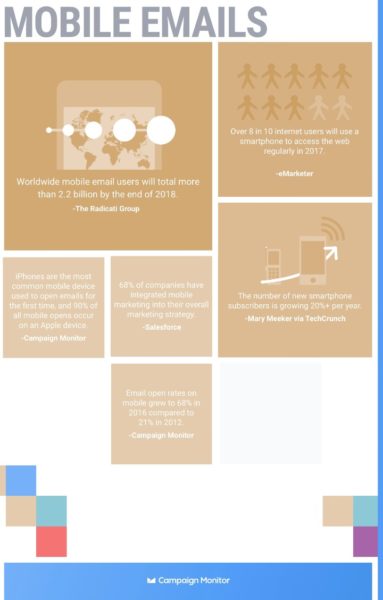Leveraging mobile marketing for your e-commerce business is a necessary strategy you must incorporate if you want to succeed as an e-commerce business owner. In the last few years, the number of people that use mobile marketing for their e-commerce business has increased tremendously. In fact, there are currently 3.8 billion smartphone users in the world.
Furthermore, global mobile e-commerce is projected to reach $3.56 trillion by the end of 2021, and it will account for 72.9% of all e-commerce businesses within the same year.
By considering your mobile audience, you stand a better chance of engaging and connecting with them making their user experience journey as seamless as possible.
Therefore for an e-commerce business to make most of its marketing budget, it is important to focus a significant portion of its efforts on the mobile audience.
To help e-commerce businesses effectively target and reach mobile users, we have listed some effective strategies.
Table of Content
What is Mobile Marketing?

According to Wordstream mobile marketing is the art of marketing your business to appeal to mobile device users. When done right, mobile marketing provides customers or potential customers using mobile devices with personalized and sensitive information based on time and location on the go.
It also involves a multi-channel, marketing strategy aimed at reaching a target audience on their smartphones, tablets, and other mobile devices, via websites, email, SMS and MMS, social media, and apps. It includes all activities related to the design, implementation, and execution of marketing actions.
How to Leverage Mobile Marketing For Your E-commerce in 7 Steps
1. Optimize Your E-commerce Website for Mobile Users
Optimizing your e-commerce website is one of the most important ways of leveraging mobile marketing for your e-commerce business. This is the most critical part of an e-commerce mobile strategy.
As an e-commerce business, your website is your most important marketing and communication tool that connects you with your audience. Therefore your website must be optimized for mobile users.
The first thing to do here is to build a website with a responsive design. This offers an optimal version of your website for each device that your visitors use(tablets, smartphones, Ipads etc). The website adjusts automatically to fit the screen of the device the customers are using thereby providing them with an exceptional onsite experience that is void of any rendering issues.
Ensure you have a robust user experience for mobile users. Also, make sure that your website meets the mobile-friendliness of the requirements of search engines. Therefore your mobile web page’s content must fit well on a smartphone screen. It also needs to load quickly on any device and return no mobile-specific errors. All in all, you’re looking for a responsive design that best showcases your products.
A responsive design is incredibly important for an e-commerce website because the size of a mobile screen is smaller than that of a desktop, so the website might look different on both devices. This design ensures that visitors can view, click and scroll through pages, find a certain product, or type in billing information into form fields without any errors.
By bringing users to a platform that is tailored to the device they’re consuming content on, your mobile marketing strategy is likely to be much more effective, which brings us to the next initiative I’d like to highlight:
2. Leverage Video Content for Mobile Users

Video remains one of the most engaging content types on the internet today. That’s because the engagement level of videos content is always higher than any other content. Video content has also proved to performs better than Ads. This is why more and more social media platforms are paying attention to video content.
Let’s start with these important video statistics:
- Statistics show that the number of online buyers as of 2021 is over 2 billion.
- YouTube platform has over two billion users.
- More than one billion hours of YouTube videos are consumed every single day.
- About 80% of video marketers say video has increased their sales, while 84% of customers say they bought goods or services after watching a video.
- Currently, video content represents 82% of internet traffic,
The above statistics show that mobile users consume more video content at a tremendous rate. Therefore, to leverage mobile marketing for your e-commerce business, you need to incorporate video content in your campaign strategy. Video content like product reviews, live demos, webinars and how-to guides have proved to be effective than ordinary text. This type of content will convey more information about your business and products in the most informative way.
Making a video doesn’t have to be expensive especially for small businesses. You do not need high-end software or gadgets to start creating video content; your mobile phone camera should be enough for you to start with.
If you are the type that doesn’t like to stand in front of the camera or are camera-shy, you can do a mix of PowerPoint presentations with your voice. You can make use of one of the screen recording software like Camtasia and Screentomatic to capture your screen.
3. Leverage on Social Media Marketing
Social media marketing refers to the process of using social media platforms like Facebook, Instagram and Twitter to market your product and services to your target audience.
The latest social media statistics show that there are 3.78 billion social media users worldwide in 2021 and this number is meant to increase to 4.4 billion in 2025.
As internet access and smartphone use is expanding worldwide, active mobile social media users are estimated to be 4.08billion according to Statista.
The above statistics show that there is a lot of people using social media and the majority of its users are mobile users. Therefore you have to incorporate social media marketing to successfully leverage mobile marketing for your e-commerce business.
To effectively target your mobile audience on social media you need to:
- Identify and define your goals
- Define your target audience
- choose the right social media channel
- Create and share content that will resonate with your audience
- Make use of Paid Ads
- make use of retargeting strategy
Some content that resonates with social media platforms include:
- Videos
- Images
- testimonials
- Infographics
- Memes/jokes
- live videos via Facebook or Instagram.
Advertising on Facebook and Instagram is an effective way of driving traffic back to your websites. You can do this by segmenting your ads in terms of geography, location, interest etc. You can even choose to target mobile users only.
Make sure to optimize ads to fit the screen of your mobile users while taking note of the unique attributes of the platform and how that will impact the ad format that you use.
For example, if you are displaying a video ad on Facebook, keep all of the essential information at the beginning of the video, and use a static yet extremely descriptive image to present the video. This way, if users don’t hear the video, or choose to skim past it, they still can absorb the core messaging you’re trying to evoke.
4. Leverage Email Marketing

Email marketing is simply the use of emails to promote products or services. Mobile email marketing refers to the process of using emails to market your product and service to mobile audiences.
Statistics show that;
- 60% of email opens are from mobile devices. (Aedestra, 2019)
- Mobile email users totalled 2.2 billion by the end of 2018. (Campaign Monitor, 2018)
- Launching a mobile-responsive email design can increase unique mobile clicks by 15%. (MailChimp, 2019)
- Mobile-friendly email is the second most-used tactic email marketers to improve their performance. (HubSpot, 2020)
- 9.3% of email clicks come from tablets, rather than smartphones or computers. (MailChimp, 2019)
The above statistics show that a lot of people check their emails from their mobile devices rather than desktop. Therefore, creating email campaigns to target mobile users can be incredibly effective at driving website traffic and generating sales.
To effectively target your mobile audience via email do the following;
- Make your email marketing mobile-friendly by
- UsE a responsive design for all of your emails so that the content renders well regardless of device
- Make use of fonts that are easy to read.
- Use High quality and compelling images
- Include clickable icons and calls-to-action (CTAs).
- Use a short, catchy and compelling headline to fit mobile screens
5. Mobile Apps
As the number of both internet and smartphone users increase daily, a lot of companies are creating a mobile version of their website in form of an app. This is created to improve your customer’s experience and increase interaction. With a mobile app, you can communicate with your customers, send notifications, provide advanced support, and more.
A mobile app can be expensive to build and manage and for them to be successful, it must offer some sort of value that your mobile-friendly website does not offer. So before building a mobile app make sure it is necessary for your brand.
Overall a mobile app offers a more personalized experience for your customers by incorporating modern technology into mobile marketing. Apps also offer an excellent shopping experience and more secure payment options for consumers. It is a very effective strategy to keep shoppers engaged.
6. Leveraging search and display Ads
Ads generally are one of the most effective ways to reach a wide range of audiences, build awareness and generate traffic to your website. There is a variety of mobile marketing opportunities that you can leverage by using this channel. The most important thing here is to know when and how to utilize them.
For example, display ads on Google allow you to target mobile users and serve ads to your targeted demographic. When leveraging display ads, make sure your ads are optimized for mobile screens. Create a concise copy and use clear and relevant images with a call to action button that is easy to click from a touchscreen phone.
You can also target users by their location and other important demographics that are peculiar to mobile users that consume content on the go.
Search ads on the other hand are your pay-per-click (PPC) ads which are excellent for targeting specific audiences. A well crafted mobile PPC campaign will boost webpage traffic and conversion rates. An e-commerce business whose goal is to drive website traffic and conversion will likely benefit from this since you only pay when someone visits your site. This allows you to manage costs while driving website traffic and reaching new customers.
Google Ads also allow you to allocate a budget based on devices like smartphones, tablets and desktops for your campaigns and identify varying cost-per-acquisition (CPA) goals for each.
7. Personalized campaigns.
Personalization is an important online marketing strategy used by many companies to engage with customers on a more personal level. In fact, 65% of smartphone users are more likely to purchase from companies whose mobile websites offer them relevant recommendations on products they might be interested in.
Consumers don’t like being treated like just another number on the list. That is why companies are engaging with them on a more personal level to form a stronger relationship with them to improve their user experience and ultimately increase revenue. For example, as soon as a customer subscribes to your mailing list, send them a welcome message. Also, you should engage in user-generated content by sharing customers testimonials and other relevant content.
You can run a mobile-friendly email marketing campaign through an email marketing platform like Aweber and Mailchimp, you can track the users’ activity on your website and send personalized product recommendation messages.
Conclusion
With millions of people shopping every day, more brands and e-commerce businesses are springing up to meet that demand. Therefore an effective mobile marketing strategy is no longer an option. It must be incorporated and executed as part of your e-commerce strategy.
The above strategies(if executed well) well can deliver outstanding results. Also, you need to research your competitors to find what is working for them and implement it in your strategy.







